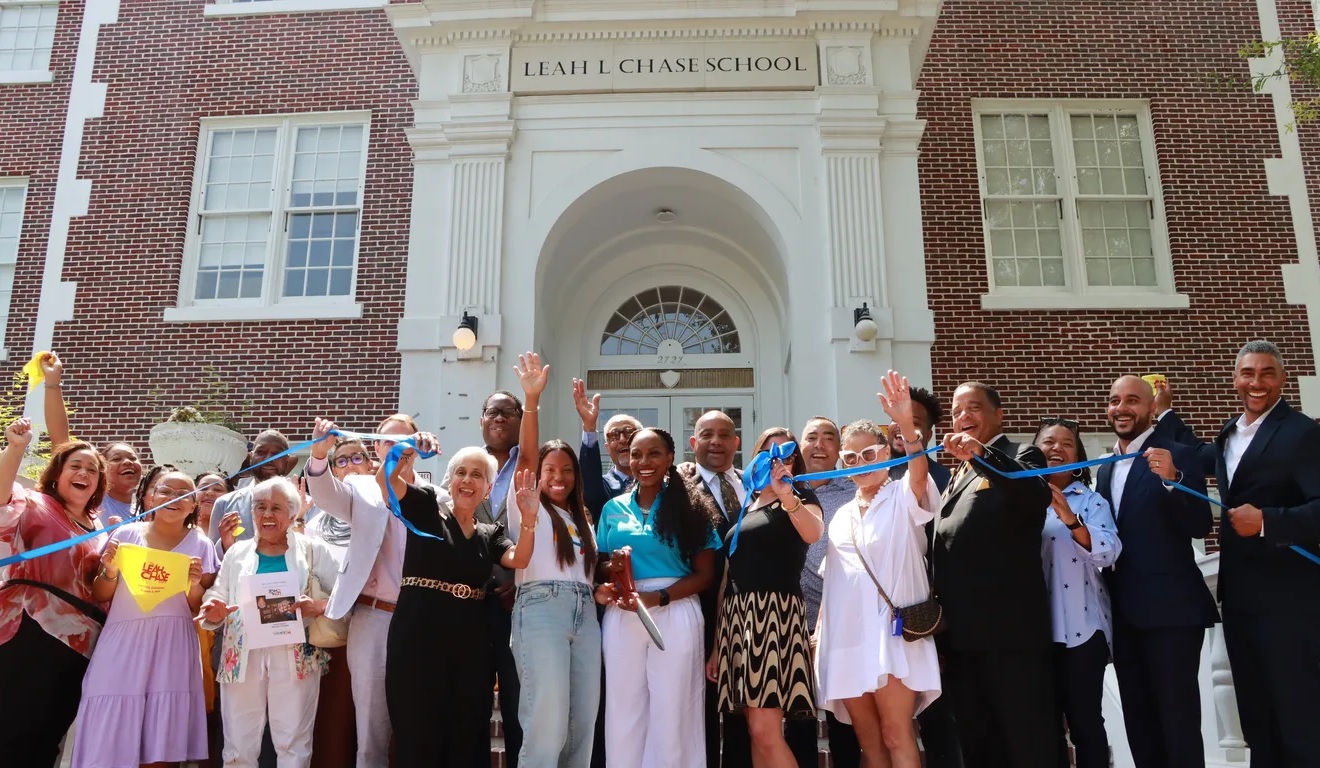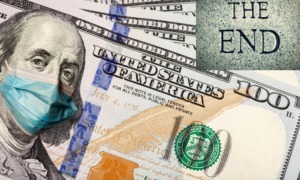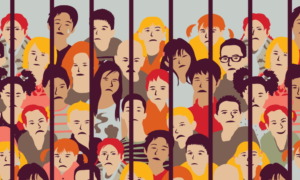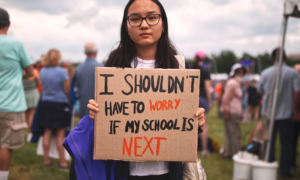This story was produced by The Hechinger Report, a nonprofit, nonpartisan news outlet focused on education.
In August, more than 300 students started the school year in the first traditional school run directly by the New Orleans school district since 2019. It’s the first time the district has opened its own school since Hurricane Katrina swept through the city nearly two decades ago.
The pre-K-8 school, named after New Orleans cultural and civil rights icon Leah Chase, came together in just a handful of months. Its opening ends the city’s five-year run as the only all-charter school district in the nation. Charter schools receive public funding, but are independently run.
For some, the opening of the Leah Chase School is a symbol of stability. In a district that’s been out of the business of directly managing schools for five years, it is a tentative step toward a new era in the city where permanent, traditional neighborhood schools are more commonplace. NOLA Public Schools, the district’s official name, has about 41,600 students, 75 percent of whom are Black.
The decision to open the school in a short time also reflects shifting attitudes in the community and the Orleans Parish School Board, which was once committed to having only charter schools in the district. What happens with the Leah Chase School is a litmus test for a school system that was once considered failing in most metrics, and it will likely determine how it operates future schools, and when.
“I think the opening of the Leah Chase School does mark a new period for New Orleans public schools,” said J. Celeste Lay, a political science professor at Tulane University who studies education policy. “I think they are more willing to consider directly running schools in ways we haven’t seen, certainly since Katrina.”
New Orleans unique challenges
The dispute over who runs schools in Orleans Parish goes beyond the national debate over school choice. What happens when a city with a struggling school system gets swallowed by the sea, and how does that system recover when the waters recede?
[Related: ‘Not waiting for people to save us’: 9 school districts combine forces to help students]
The idea to open Leah Chase cropped up in January after a tense board meeting over the future of Lafayette Academy. That charter school, in New Orleans’ Uptown neighborhood, received an F rating on the state’s report card. Superintendent Avis Williams recommended revoking the school’s charter in November. Typically, a different charter group would offer to step in.
But when the December deadline for a new operator came and went with no charter group stepping up, Williams recommended that the board keep the school closed, requiring parents to find another option for their children.
At that time, she presented the obstacles to opening a district-run school, from the abbreviated timeline to hire staff and adopt curriculum to planning for the city’s declining birth rate and drop in district enrollment.
Board members ultimately approved the superintendent’s recommendation, but they made it clear: If the school is closing, the district should have a plan to replace it.
A day after the January board meeting, the superintendent made a sharp turn. The district would run the school after all, in the building that had been occupied by Lafayette Academy.
Williams said the decision to open the school was what the board, and community, wanted.
“That was just something the community has impressed upon our board members, and they did vote unanimously for us to direct-run the Leah Chase School and for us to direct-run more schools,” Williams said.
Why open Leah Chase School as a traditional school?
Both the Recovery School District – a special statewide district created to manage underperforming schools – and New Orleans Public Schools had poured money into renovating and abating asbestos in the building that housed Lafayette Academy that is now the site of the Leah Chase School. That was one factor in wanting to keep this particular building open. But more than anything, the decision stemmed from a growing sentiment in the community, and among newer board members, that it’s time for the district to have a traditional school again, said Carlos Zervigon, a member of the Orleans Parish School Board whose district includes the Leah Chase School.
“There’s a sense that if we’re a system of choice and a system of innovation, one choice should be a school run in a traditional way by the school district directly, with a focus on the neighborhood,” Zervigon said. “That should be one of the choices, and there’s a strong feeling about that.”
In its first week open, the Leah Chase School had already met the goals district leaders outlined for it. The school has a full staff, a principal, a bus transportation system and more than 300 students enrolled — many of which transferred from Lafayette.
“My expectation was certainly that there would be some glitches, but it was a seamless day,” said Williams, the superintendent.
Logistical and financial issues
The district still has logistical questions to answer. School enrollment in NOLA has dropped by about 5 percent — 2,400 students in five years, according to the district — and if enrollment continues to fall, more school closures are on the horizon. That’s something the superintendent has been tasked with addressing in a five-year plan she’s set to present to the board this fall, along with goals for future traditional public schools.
“That’s part of the optimization plan — we’re looking at size of schools, number of seats available,” said Leila Jacobs Eames, vice president of the Orleans Parish School Board and one of the board’s more vocal advocates for traditional schools.
Financially, the district will need to open more traditional schools to cover the cost of district office staff that are required to run schools. The district is currently using its fund balance to cover much of the start-up costs for the Leah Chase School.
“The question is, with their skeleton crew, can they do all that and create the internal capacity to operate schools again?” said Douglas N. Harris, a professor at Tulane University and director of the National Center for Research on Education Access and Choice. “And the larger question — will they be good at it?”
NOLA’s past charter school solution
Hurricane Katrina was the catalyst that resulted in New Orleans’ charter-focused district, but the district’s poor performance, and the city’s broken trust in the school system, predates the devastating storm. In 2004, one year before Katrina, only half of high school students were graduating, and under a quarter of seniors were enrolling in college. School board members and officials were indicted on corruption charges stemming from millions of unaccounted-for dollars. The 2005 hurricane pushed a district already on the brink into collapse.
“You had kids that were switching schools every other year because their school would close or their school would transition” to a charter school, “would take on new grades or close certain grades. It was a crazy, terrible time.”
— J. Celeste Lay, political science professor at Tulane University
When Katrina destroyed nearly 90 percent of the public schools in the city, the state’s Recovery School District took most of them over, while the Orleans Parish School Board still had control of a few schools. The years immediately following Katrina were chaotic — schools opened, and closed, on a dime.
Slowly, the few remaining noncharter schools transitioned into charter schools. The arguments in favor of a charter system were numerous: Academic and school management decisions would be left to schools instead of to a district with a history of corruption; charters gave students the opportunity to attend schools outside of their neighborhoods; and the new system brought the promise of change for a city that desperately needed better options.
But it also left a bitter taste. There were concerns about shifting power from a majority-Black, locally elected school board to a majority-white state board — many of whose members had no direct ties to New Orleans. And the district’s entire teaching staff, which was 71 percent Black, was fired. By 2014, fewer than 50 percent of public school teachers in New Orleans were Black.
“You have a Black majority constituency that is being told your elected officials cannot directly control your schools, and it feels a lot like disenfranchisement,” said Zervigon, the school board member.
Recovery School District rules and results
Because charter schools were no longer merely an option for families but the main source of public education in New Orleans, the Recovery School District created rules that charters elsewhere don’t have to follow: Enrollment in schools was handled by the district, charters had to provide transportation options, and they had to have district permission before expelling a student. The state passed legislation — Act 91 — enshrining those rules into law before the Recovery School District handed its schools back to the New Orleans public school district in 2017. By 2019, every public school in the parish was a charter, and most of those schools are Black-led, Zervigon said.
Overall, schools in the district are performing better now than they were before Katrina. The high school graduation rate has risen to 78 percent in 2022, from 54 percent in 2004. The college entry rate rose to 56 percent in 2021, from 37 percent in 2004.
“Test scores went up, high school graduation, college graduation, ACT scores — everything improved, which is really unusual,” Harris said. “A lot of them improved quite considerably, which is also very unusual. It’s generally the most successful district school reform that we’ve ever seen — of any kind, not just a charter district.”
Schools have stabilized compared to the years after Katrina, but the framework of a charter system requires closing poor performing and financially struggling schools. Though the number of schools closing each year is far lower than it was in the years directly after Katrina, it is not uncommon for a charter to get revoked. Along with Lafayette Academy, the school district rescinded the charter of the 180-student Living School, which didn’t reopen this fall.
Ultimately, people are sick of that cycle, Zervigon said.
Closing failing charter schools
“It’s just not reasonable to tolerate closing schools anymore,” he said. “This idea of closing your way to improvement — no one wants to do that.”
There’s disagreement on how successful the city’s charter model has been for students more recently. In 2019, New Orleans schools were among the top in the nation for academic growth according to a Stanford University report. But annually, most of the city’s schools get a C, D or F rating on state report cards. A 2016 study from a different department at Stanford University said the quality of schools in the city varies greatly depending on the school, and the main mode for addressing this — closing failing schools — hurts achievement for displaced students.
“There’s a lot of disagreement around whether the schools are better and what better means,” said Lay, the Tulane professor. “There are people who will certainly point to increases in test scores and graduation rates as solid evidence of improvement. But I think many others look at that as a very narrow way to measure transformation or success, and instead would prefer a holistic view of success of the district: inclusion of students, stability in terms of being able to attend schools, and know those schools are going to be open for the next several years of their education.”
NOLA’s future
The five-year plan that Williams, the superintendent, will present to board members in October will include plans for new traditional schools and how the district will address declining enrollment.
Board members and the superintendent have said they are still committed to charters. But the school system will likely add more traditional schools to join the Leah Chase School.
“They’ll probably operate a couple more, but still fundamentally remain a mostly charter school district,” Harris said. “I think that partly because a big change can only happen slowly.”
***
Ariel Gilreath covers early education and K-12 schools in North Carolina, South Carolina, Georgia, Alabama, Mississippi, Arkansas, Florida, Kentucky, Louisiana, Tennessee and West Virginia. She most recently covered education and family issues in South Carolina with the Greenville News and the USA TODAY Network.
This story about New Orleans schools was produced by The Hechinger Report, a nonprofit, independent news organization focused on inequality and innovation in education. Sign up for the Hechinger newsletter.






























